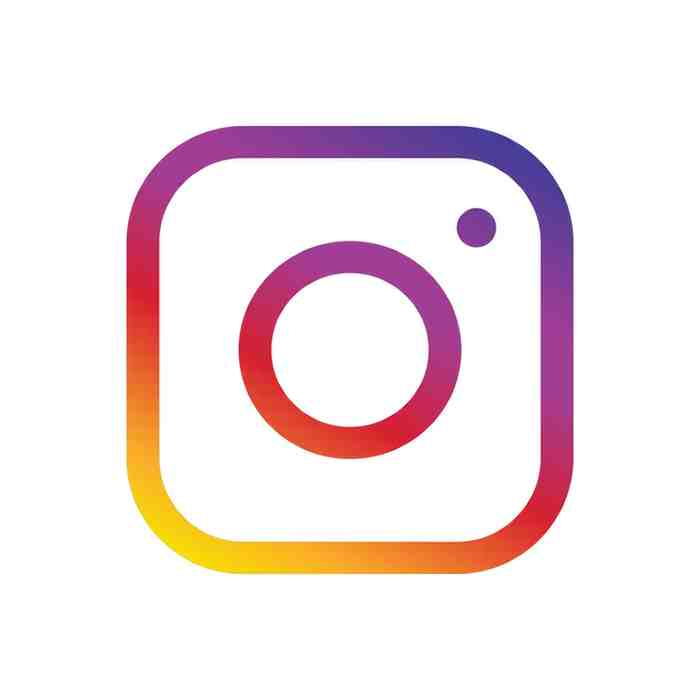Posted by: Northwest Eye in General on May 16, 2025
Overview
We understand that recognizing early symptoms of glaucoma can be concerning. Symptoms such as blurred vision, peripheral vision loss, and halos around lights are crucial indicators for timely intervention. It’s important to know that these symptoms often develop silently, which can lead to anxiety about your vision.
Regular eye examinations are vital for early detection and effective management of this condition. By staying proactive about your eye health, you can help prevent irreversible damage to your vision. Remember, we are here to help you through this process and support you in taking the necessary steps for your well-being.
Introduction
In a world where vision is often taken for granted, we understand that the silent threat of glaucoma can feel overwhelming. This insidious condition affects millions without warning, quietly robbing individuals of their sight. Early detection is not just important; it is essential for preserving your eye health. Symptoms can range from subtle changes in vision to acute pain, making it crucial to recognize the early warning signs.
This article delves into the various indicators of glaucoma, emphasizing the significance of regular eye exams and proactive care. We want to empower you with knowledge because by raising awareness, we can strengthen the fight against glaucoma. Together, we can ensure that more people have the opportunity to maintain their vision for years to come. Remember, we are here to help you through this process.
Northwest Eye: Recognizing Early Signs of Glaucoma
At Northwest Eye, we understand that recognizing the early signs of eye pressure issues is crucial. This often silent condition can develop without noticeable glaucoma symptoms, which could potentially lead to irreversible damage if not detected promptly. Early detection is vital for preserving your vision, so it’s essential to remain vigilant about any warning signs. Regular eye examinations are key in this process, as this condition results in over 10 million doctor visits each year in the U.S., highlighting the importance of proactive eye care.
Our commitment to educating individuals is reflected in our effective programs designed to raise awareness about this condition and other eye-related issues. These initiatives empower you to understand the risks and symptoms associated with the disease. For instance, Dr. Friedman emphasizes the importance of regular eye examinations, particularly for those at greater risk, to detect the condition early, since damage to the optic nerve cannot be reversed.
Identifying early indicators of this condition is essential. Symptoms of glaucoma may include:
- Peripheral vision loss
- Blurred vision
- Halos around lights
By being aware of these glaucoma symptoms, you can seek timely medical intervention. At Northwest Eye, we focus on comprehensive eye care services, including treatment for increased intraocular pressure, ensuring that you receive the highest quality of care. Case studies, like those shared by Dr. Lawrence S. Geyman, underscore the importance of community support and resources for patients facing a diagnosis of eye pressure issues. These insights reinforce the need for a proactive approach to eye health, ensuring that you are prepared to recognize and respond to early indicators of the condition effectively. To learn more about your eye health or to schedule an appointment, we invite you to contact Northwest Eye today.
Open-Angle Glaucoma: Persistent Eye Pressure and Vision Changes
Open-angle ocular hypertension is a condition that can lead to a gradual increase in intraocular pressure, often developing without immediate glaucoma symptoms. We understand that you may notice subtle changes in your vision, which could include glaucoma symptoms such as difficulty focusing or the emergence of blind spots. It’s also common for blurred vision to occur, which can stem from various issues like cataracts, diabetic retinopathy, dry eyes, macular degeneration, or uncorrected refractive errors. This may indicate elevated intraocular pressure, and it’s important to pay attention to these glaucoma symptoms.
This condition affects more than four million Americans, particularly older adults, highlighting the importance of early detection to prevent irreversible vision loss. According to the case study ‘Understanding Glaucoma,’ early detection is vital, especially since many older adults are at risk. Regular monitoring of intraocular pressure is crucial, as unmanaged open-angle eye disease can lead to serious complications, including irreversible sight loss.
Research indicates that maintaining intraocular pressure within normal ranges—typically between 10 and 21 mmHg—can significantly reduce the risk of vision loss. Real-world examples show that consistent monitoring can effectively manage the condition, allowing for timely interventions. As Dr. Lawrence S. Geyman states, “Join Dr. Lawrence S. Geyman as he outlines effective ways to find support for your eye condition diagnosis.”
Understanding these signs, such as blurred vision, and recognizing the essential role of pressure control is vital for preserving your eyesight and enhancing your quality of life, especially for those with cataracts who may also experience glaucoma symptoms due to increased eye pressure. If you are experiencing blurred vision or any other glaucoma symptoms, it is important to seek professional medical assistance promptly. We are here to help you through this process. Request a Consultation Now.
Visual Disturbances: Blurred Vision as a Warning Sign
Blurred eyesight often acts as an early warning signal of eye pressure issues. Many individuals describe experiencing a hazy or reduced clarity in their sight, especially in dim lighting. This symptom can be particularly concerning, as it may suggest increasing intraocular pressure or potential harm to the optic nerve—both critical factors in the progression of eye disease. Research indicates that around 40% of glaucoma patients encounter blurred sight at some point in their condition, highlighting its commonality as one of the glaucoma symptoms. As pressure increases, the likelihood of visual disturbances also escalates. We understand that identifying this symptom is crucial. Prompt assessment by an eye care expert can lead to early diagnosis and intervention, potentially safeguarding your sight. Blurred vision can also arise from various abnormalities such as nearsightedness, farsightedness, or astigmatism, which may improve with corrective lenses. However, it can also signal the presence of more serious eye diseases, including cataracts and diabetic retinopathy. As emphasized by Prevent Blindness, a prominent organization in eye care, recognizing signs like unclear sight is essential for preserving eye health and preventing further issues.
Patient experiences further underscore the impact of unclear sight on diagnosing eye pressure disorders. Many individuals report that their first awareness of changes in their vision prompted them to seek medical consultation, leading to earlier identification of their condition. This aligns with findings from case studies linking unclear sight to early detection of glaucoma symptoms, reinforcing the importance of being alert to visual changes. Organizations such as Prevent Blindness play a vital role in raising awareness and educating the public about these symptoms, affecting millions each year.
In conclusion, blurred sight is not merely an inconvenience; it serves as a significant warning signal that deserves prompt attention. Understanding its implications empowers individuals to take proactive steps in managing their eye health. We are here to help you through this process, ensuring you receive the care and support you need.
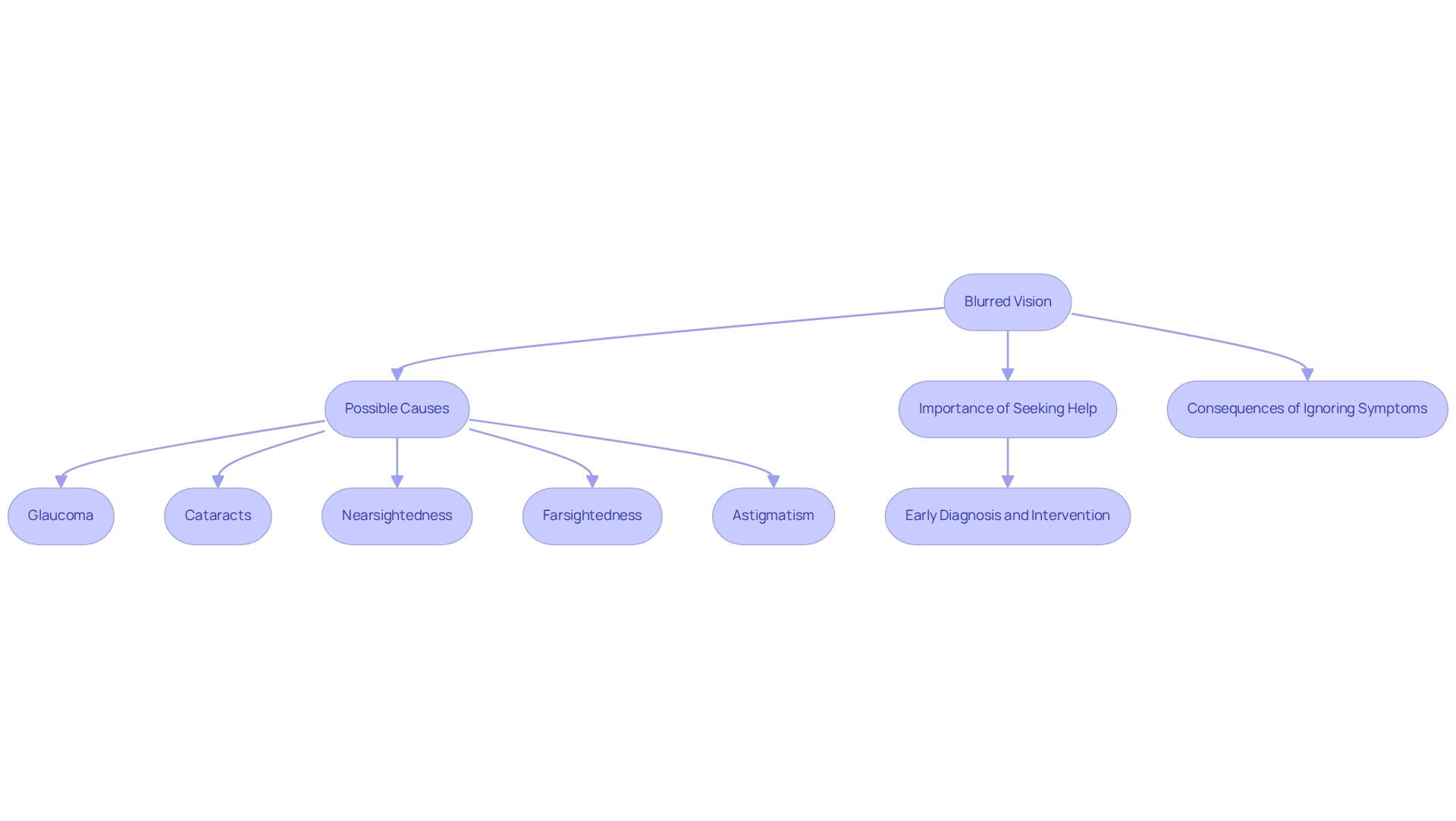
Peripheral Vision Loss: A Key Indicator of Glaucoma
A key indicator of this eye condition is the slow diminishing of side sight, which is among the glaucoma symptoms that often leads individuals to describe their vision as tunnel-like. This narrowing of sight can go unnoticed until glaucoma symptoms significantly impact daily activities, such as driving, reading, or navigating familiar environments. While specific data on peripheral sight loss in individuals with eye pressure issues may not be readily available, the reliability of patient-reported symptoms is notably high, with an average percent agreement of 0.89 between questionnaire responses. This highlights the importance of regular eye exams that include visual field tests for early detection.
We understand that real-life experiences can illustrate how a narrow focus affects daily life. For example, individuals may find it difficult to see objects on the side while walking or may struggle to engage in conversations without turning their heads. Such limitations can increase the risk of accidents and diminish overall quality of life.
Expert insights reinforce that loss of peripheral sight is a significant indicator among glaucoma symptoms related to eye pressure conditions. Yang Dai asks, “What do individuals with eye pressure issues perceive?” This question underscores the need for individuals to be vigilant about glaucoma symptoms and to seek timely assessments. The effectiveness of questionnaires used in evaluations indicates that patient-reported symptoms can play a crucial role in guiding clinical assessments.
Incorporating natural remedies, such as dietary adjustments and lifestyle changes, may enhance the management of eye pressure conditions and support the preservation of peripheral vision. Understanding glaucoma symptoms and their implications is vital for improving patient care and ensuring timely intervention. We encourage routine eye examinations, as they are essential for early identification and proactive management of the condition.
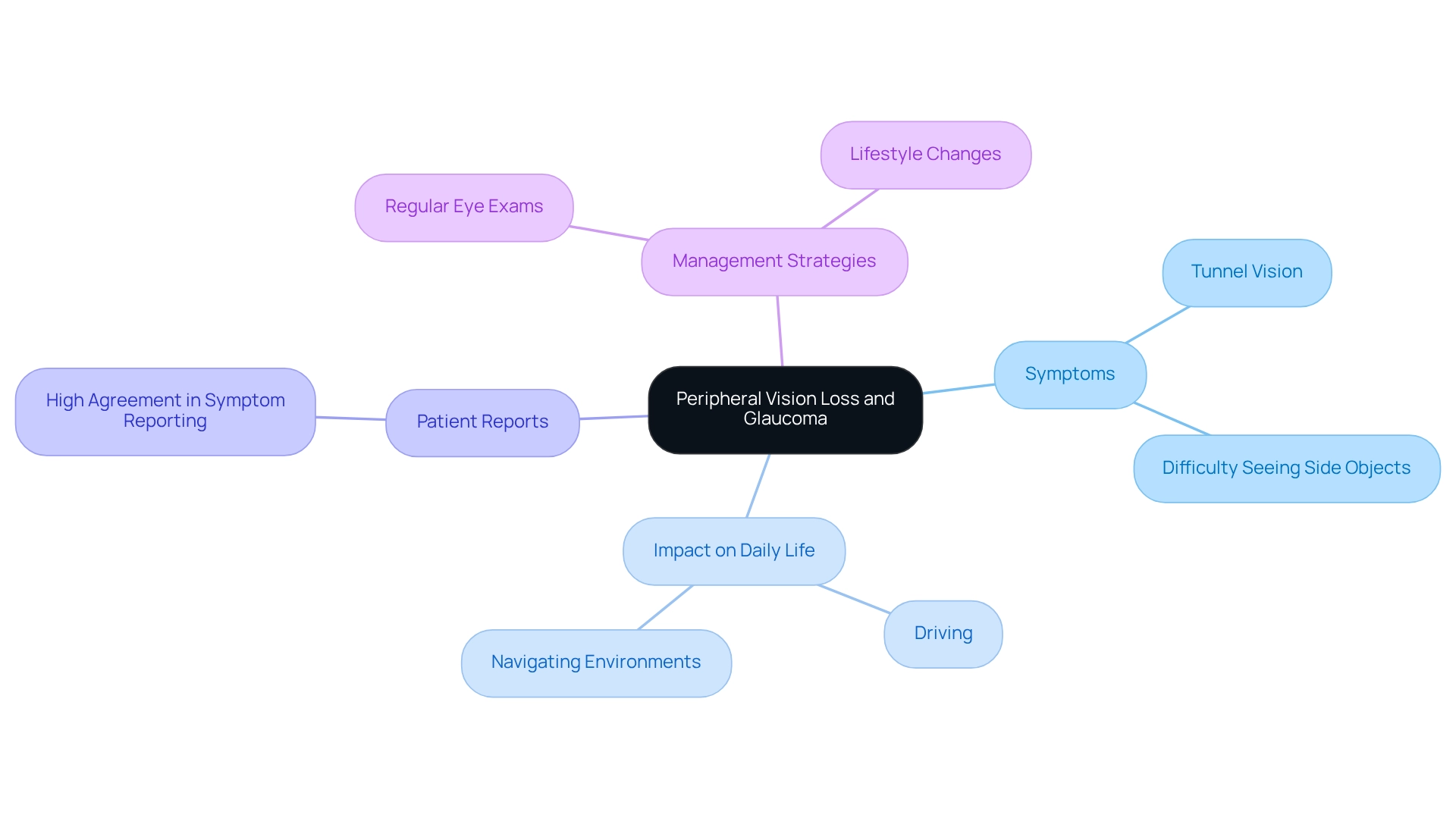
Eye Pain or Discomfort: An Urgent Symptom to Address
Experiencing severe eye pain or discomfort can be alarming, and it’s important to recognize that this is a hallmark symptom of an acute eye condition, which constitutes a medical emergency. Many patients who endure this intense pain often find themselves grappling with accompanying symptoms like nausea and vomiting. We understand that this can be distressing, especially when statistics reveal that about 30% of glaucoma patients experience glaucoma symptoms like eye pain. This underscores the need for vigilance, particularly among high-risk groups such as:
- Individuals over 60
- Those with a family history of the disease
- Diabetics
- People with severe nearsightedness
In the event of sudden eye discomfort, seeking prompt medical assistance is crucial. We want to emphasize that timely intervention can significantly enhance outcomes, helping to prevent the risk of permanent sight loss. It’s common to feel overwhelmed in such situations, but recognizing and responding to the urgent glaucoma symptoms can make all the difference. Moreover, the economic impact of eye conditions is substantial, with an estimated financial burden of $2.86 billion annually in the U.S. This highlights the importance of early detection and effective management—not just for preserving vision but also for reducing healthcare expenses. Emergency care protocols for patients experiencing eye pressure issues prioritize rapid assessment and treatment, aiming to mitigate the severe consequences associated with acute attacks.
To ensure early detection and management of eye pressure conditions, we encourage individuals, especially those in high-risk categories, to arrange regular eye examinations. Remember, we are here to help you through this process, and taking proactive steps can lead to better health outcomes.
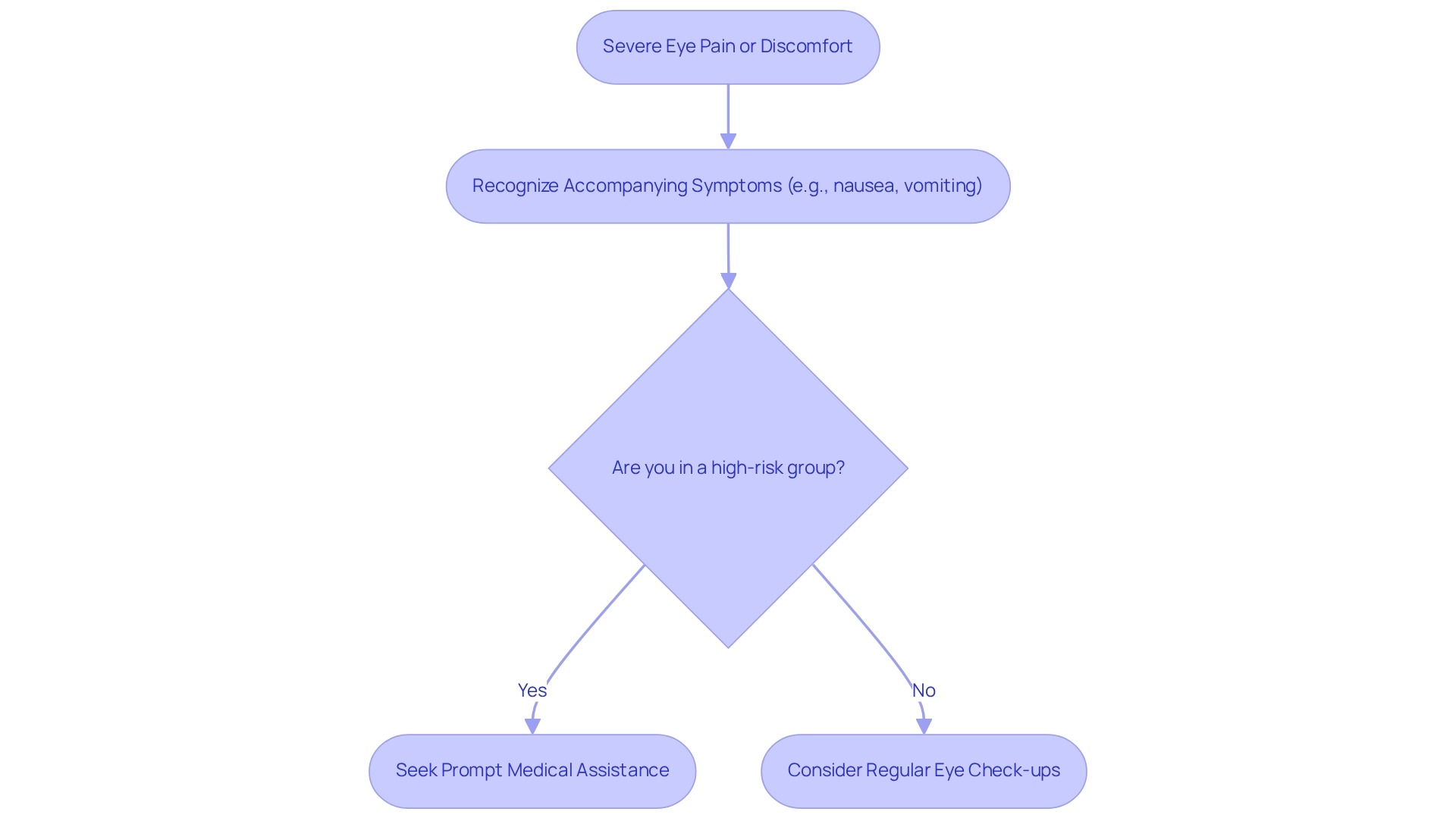
Halos Around Lights: A Symptom of Increased Eye Pressure
Many individuals experiencing eye pressure issues often notice halos or multicolored rings around lights, particularly in dim lighting. We understand that this visual disturbance can be concerning, as it is a direct result of increased intraocular pressure, which affects how light enters the eye and is processed by the retina. Studies indicate that around 60% of those with eye pressure problems report visual disturbances at night, highlighting the importance of recognizing this symptom early.
A recent case study titled ‘Innovative Approaches to Assessing Glaucoma Symptoms’ introduced a questionnaire that effectively identified various glaucoma symptoms experienced by patients, providing valuable insights into their personal experiences. If you notice halos around lights, it’s crucial to seek a thorough evaluation from an eye care professional. As Dr. Ameen wisely states, “It’s normal for prescriptions to change over time; if significant adjustments are needed frequently, it might suggest an underlying issue such as an eye disorder.”
Moreover, blurred vision can indicate various eye conditions, including:
- cataracts
- diabetic retinopathy
- uncorrected refractive errors
This underscores the necessity of professional eye care. Prompt identification and action can prevent further sight impairment, as modern therapies are effective in managing the condition and its effects.
We encourage you to schedule eye examinations promptly and to motivate loved ones facing vision challenges to do the same. Proactive eye care is essential for maintaining your well-being.
Headaches: A Possible Sign of Glaucoma
Headaches, particularly those that occur around the eyes or forehead, can indicate a specific eye condition. We understand that experiencing headaches can be concerning, especially when they are accompanied by other symptoms such as eye discomfort and blurred vision. Research indicates that nearly 40% of patients with glaucoma symptoms report headaches, often alongside visual disturbances. Blurred vision, which refers to a lack of clarity in what you see, can stem from various issues, including uncorrected refractive errors, cataracts, or other eye diseases.
These headaches may act as a warning sign, suggesting that pressure within the eye could be impacting surrounding structures. It’s common to feel worried if you frequently experience headaches along with symptoms of glaucoma, such as halos or glare. In such cases, it is crucial to consult with your eye care professional. Understanding the connection between glaucoma symptoms can lead to timely intervention and better management of your eye health. Experts stress the importance of recognizing glaucoma symptoms promptly, as they can significantly affect your quality of life and visual stability. Alireza Karimi, Ph.D., notes that changes in the eye’s drainage system in response to physical forces may be linked to the elevated eye pressure seen in individuals with glaucoma. Many patients emphasize the relationship between headaches and changes in vision, particularly concerning glaucoma symptoms, highlighting the need for awareness and proactive care. We encourage you to seek treatment at a reputable clinic like Northwest Eye, renowned for its excellence in eye care. They can provide the support you need to manage these symptoms effectively and ensure your eye health is prioritized.
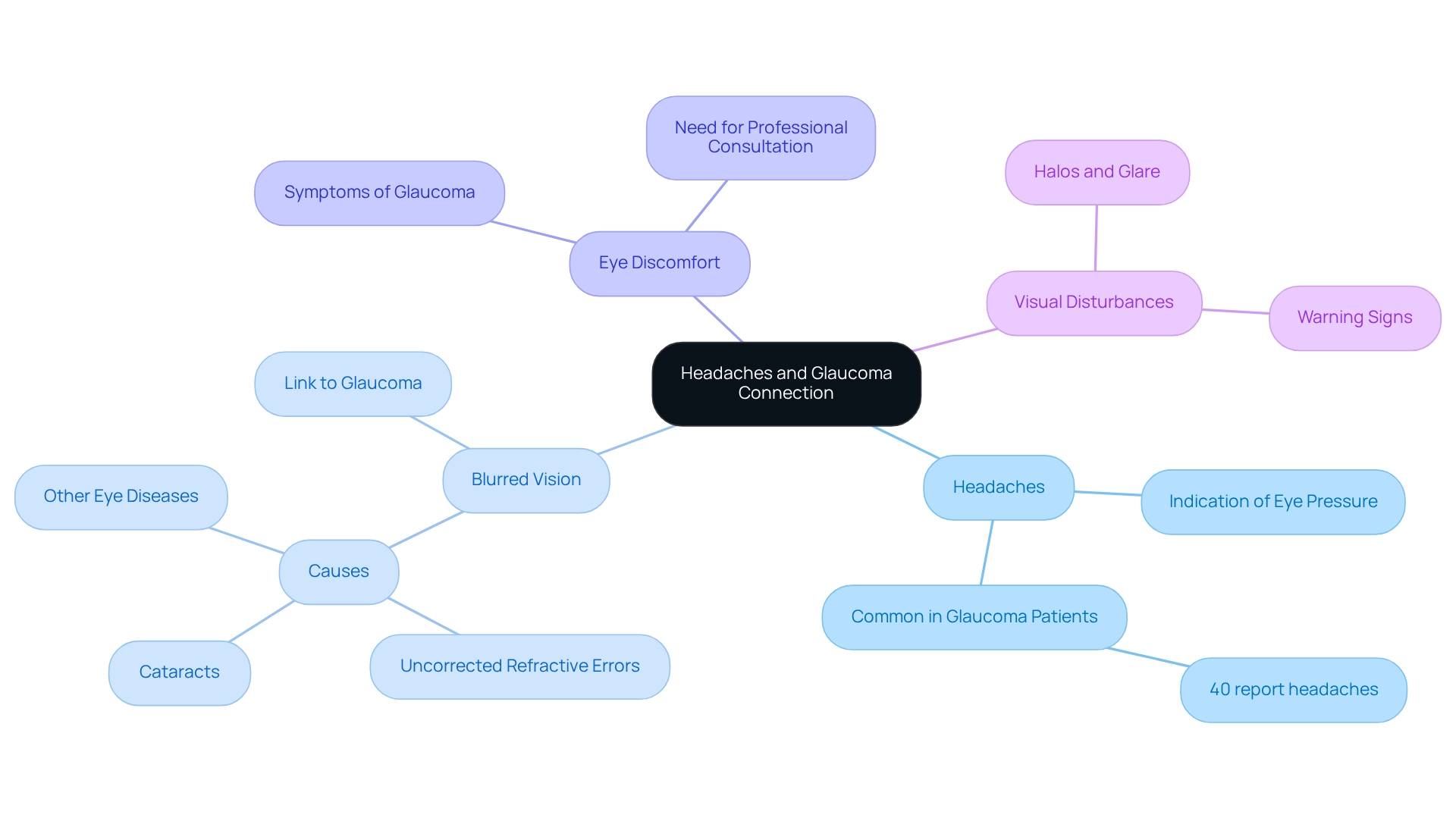
Sudden Vision Loss: A Critical Emergency in Glaucoma
Experiencing unexpected sight loss, especially in one eye, can be alarming and indicates a serious emergency that may suggest glaucoma symptoms related to an acute eye pressure condition. This condition, if not addressed promptly, can lead to irreversible sight impairment. It’s important to know that approximately 40% of patients with acute glaucoma experience glaucoma symptoms like sudden loss of sight, highlighting the necessity for immediate medical intervention. If you notice sudden changes in your vision, please seek emergency care without hesitation.
We understand that this can be a frightening experience. Case studies, such as “Preventive Measures for Sight Loss,” show that taking preventive actions—like using safety gear and managing chronic health issues such as diabetes and high blood pressure—can significantly reduce the risk of sudden sight loss. Recent advancements in the treatment of acute glaucoma indicate that options may vary based on the underlying cause, which could include surgical interventions for retinal detachment or medications for conditions like stroke.
Ophthalmologists stress that sudden changes in sight, such as glaucoma symptoms, should never be overlooked, as they can signal serious complications. As noted, “In conclusion, sudden loss of sight is a serious medical condition that can be caused by a variety of underlying factors.” Real-life accounts of successful treatments for acute eye conditions further illustrate the critical importance of timely medical response. Remember, if you experience sudden vision changes, act quickly to protect your sight. We are here to help you through this process.
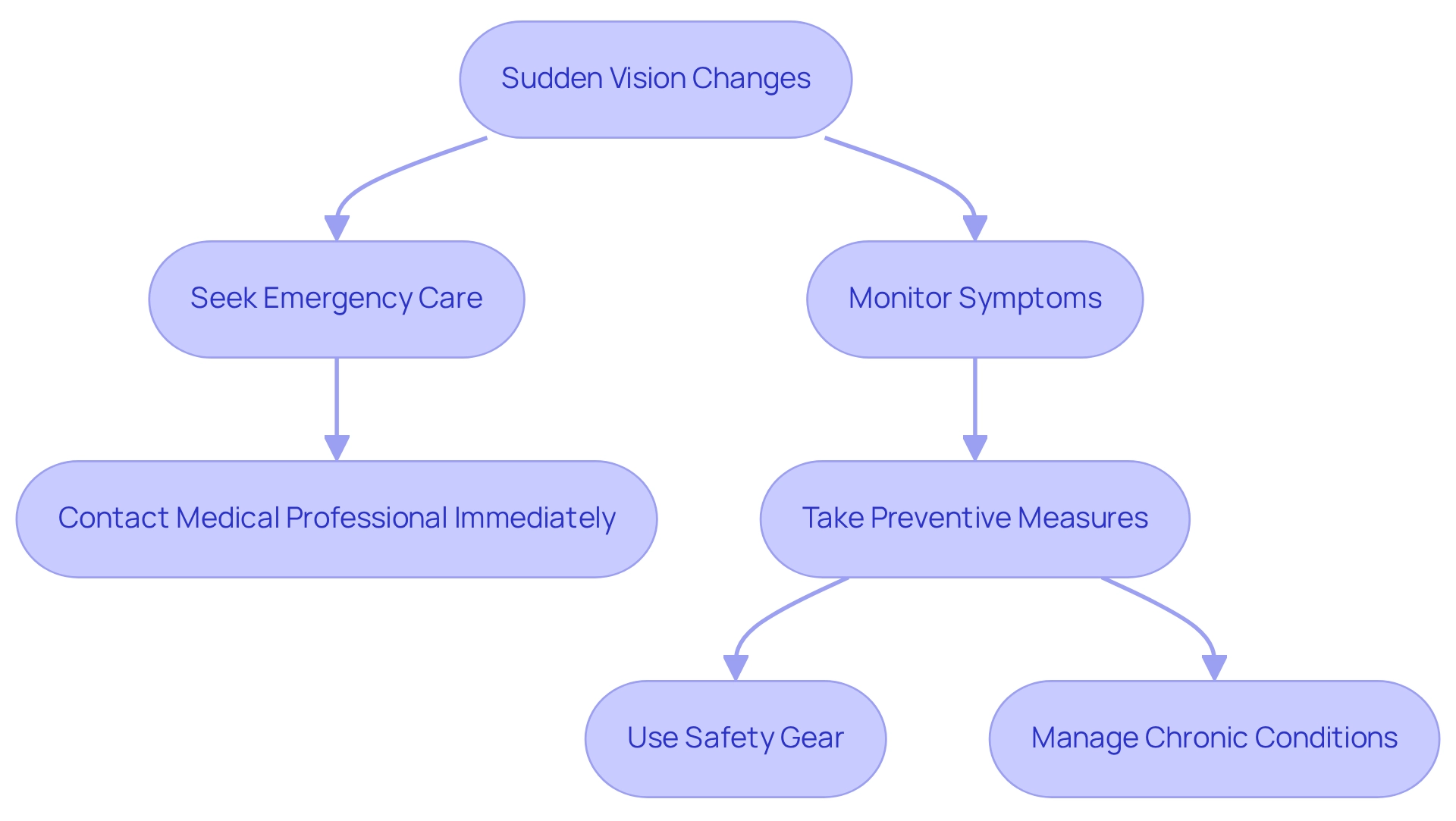
Family History: Understanding Genetic Risks for Glaucoma Symptoms
A family background of this eye disease significantly increases your risk of developing the condition. We understand that this can be concerning. Research indicates that approximately 50% of individuals with this eye condition have a direct relative affected by the disease, underscoring its hereditary nature. Geneticists stress that knowing your family’s medical background is vital, as specific genetic elements can make individuals more susceptible to eye diseases. For instance, individuals with a first-degree relative identified with the eye condition are four to nine times more likely to develop the illness themselves.
It is essential to inform your eye care provider about any family history of eye conditions. Regular screenings and monitoring are crucial, as early detection can lead to timely intervention, potentially preserving vision. Practical instances demonstrate how family background affects eye condition assessments; individuals with a hereditary connection frequently undergo more regular evaluations, which can result in earlier identification and care.
Furthermore, case studies indicate that disparities in genetic risks for eye conditions exist among various demographics, emphasizing the significance of targeted screening strategies. It’s common to feel uncertain about your risk, but specific groups, especially those with a greater occurrence of the eye disease in their family history, may benefit from proactive monitoring and education about the condition. Keeping your eye care provider updated about your family’s vision health can significantly impact your screening timetable and overall management of eye disease risk.
Moreover, socioeconomic factors can affect treatment availability and results for individuals with keratoconus, which is important in comprehending inequalities in eye care. Recent findings indicate that mobile technology and online resources are underused for delivering health information to underserved groups, highlighting the necessity for enhanced access to eye disease screening and education. As geneticists have observed, understanding the hereditary aspect of this condition is vital, and patients ought to be informed of their family history to effectively communicate with their eye care providers.
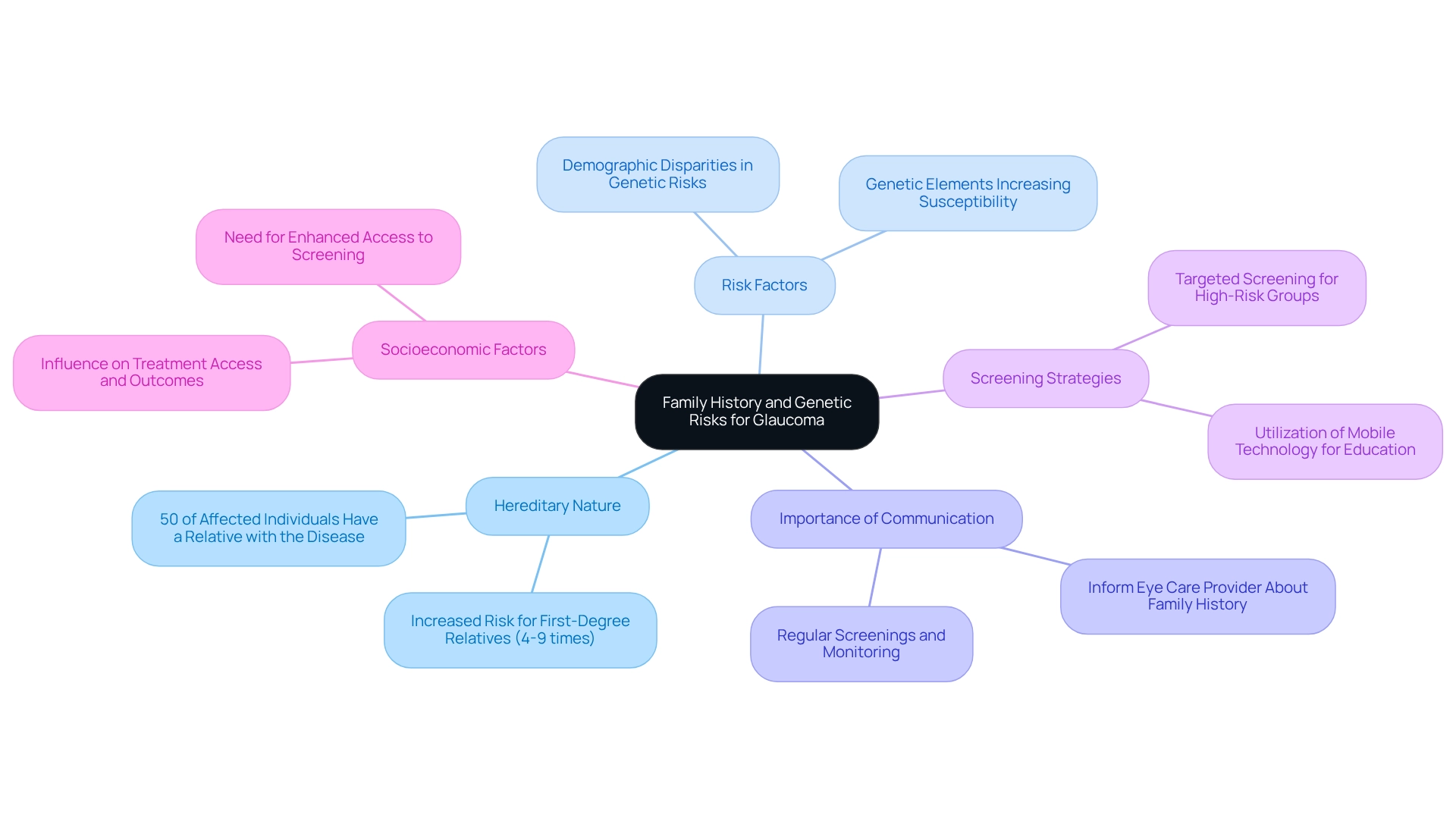
Regular Eye Exams: Essential for Early Detection of Glaucoma Symptoms
Routine eye examinations are essential for the early identification of symptoms related to increased intraocular pressure. This enables eye care specialists at Northwest Eye to monitor intraocular pressure and recognize any changes in vision. Open-angle eye disease, which constitutes at least 90% of all cases, often progresses without noticeable symptoms until significant damage occurs. We understand that it can be concerning, which is why the American Academy of Ophthalmology recommends adults have a comprehensive eye exam at least every two years. For those at higher risk, such as individuals over 60 or those with a family history of this condition, more frequent exams are crucial. Proactive measures, like routine examinations at Northwest Eye, can significantly reduce the risk of vision loss caused by this eye condition.
At Northwest Eye, our commitment to comprehensive eye care services is reflected in our patient-centered approach, highlighted by the Be Eye Wise initiative. Case studies, particularly one titled ‘Risk Factors for Developing Glaucoma,’ reveal that individuals with risk factors who engage in regular eye exams are more likely to detect the condition early. Early detection leads to effective management options, such as eye drops, laser therapy, or surgery. For instance, individuals who consistently attended eye examinations at Northwest Eye reported successful outcomes, showcasing that prompt detection through eye exams can prevent further progression of the disease. This emphasizes the importance of awareness and proactive health measures in maintaining eye health. Furthermore, regular check-ups with our optometrists at Northwest Eye are vital in minimizing the risk of vision loss due to glaucoma.
To learn more about how Northwest Eye can assist you in maintaining your eye health, we invite you to schedule an appointment today and take the first step towards proactive eye care. Hear from our satisfied clients:
- ‘Great place. The doctors and staff were extremely patient with our very active 15-month-old daughter.’ – Lydea L.
- ‘All of the staff at Northwest Eye are friendly and get your needs taken care of in the best of ways. A visit to any of the clinics is a great experience.’ – Perry H.
Conclusion
Recognizing the early signs of glaucoma is not just important; it’s essential for preserving your vision and maintaining your overall eye health. We understand that this can be a concerning topic, but knowing critical symptoms—such as peripheral vision loss, blurred vision, halos around lights, and headaches—can empower you to act. These symptoms serve as vital indicators of this often-silent condition. Regular eye exams are a cornerstone in the fight against glaucoma, enabling timely detection and intervention that can significantly reduce the risk of irreversible damage.
It’s crucial to understand your personal and familial risk factors. If you have a family history of glaucoma, prioritizing regular screenings is key. Genetic predispositions can greatly influence the likelihood of developing this condition. Additionally, being aware of symptoms and seeking immediate medical attention during acute episodes—like severe eye pain or sudden vision loss—is essential for effective management and the prevention of lasting vision impairment.
Ultimately, proactive eye care and education are your essential tools in combating glaucoma. By fostering awareness and encouraging routine check-ups, you can take charge of your eye health and safeguard your vision for the future. Your commitment to regular eye examinations and being alert to any changes in your vision empowers you to act swiftly, ensuring that you receive the care you need to maintain your sight. Remember, we are here to help you through this process, and you are not alone in this journey.
Frequently Asked Questions
Why is early detection of eye pressure issues important?
Early detection is crucial because eye pressure issues, often associated with glaucoma, can develop silently and lead to irreversible damage if not identified promptly. Recognizing early signs can help preserve vision.
What are some common symptoms of glaucoma?
Common symptoms of glaucoma include peripheral vision loss, blurred vision, and halos around lights. Being aware of these symptoms can prompt timely medical intervention.
How often should I have my eyes examined?
Regular eye examinations are essential, especially for individuals at greater risk of eye pressure issues, as they help in early detection and management of conditions like glaucoma.
What is open-angle ocular hypertension?
Open-angle ocular hypertension is a condition characterized by a gradual increase in intraocular pressure that can occur without immediate glaucoma symptoms, making regular monitoring important.
What are the risks associated with unmanaged open-angle eye disease?
Unmanaged open-angle eye disease can lead to serious complications, including irreversible vision loss, highlighting the importance of regular monitoring and early intervention.
What intraocular pressure range is considered normal?
Normal intraocular pressure typically ranges between 10 and 21 mmHg. Maintaining pressure within this range can significantly reduce the risk of vision loss.
What should I do if I experience blurred vision?
If you experience blurred vision or any other symptoms associated with glaucoma, it is important to seek professional medical assistance promptly to ensure early diagnosis and intervention.
How can organizations like Prevent Blindness help with eye health awareness?
Organizations like Prevent Blindness play a vital role in educating the public about eye health, raising awareness of symptoms, and encouraging proactive steps for managing eye conditions.



